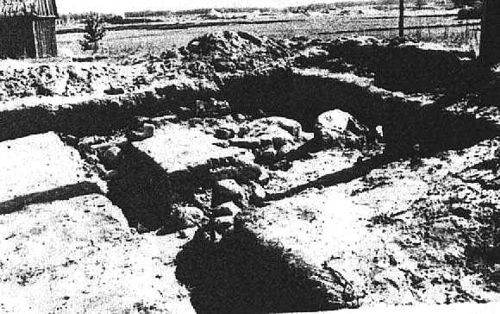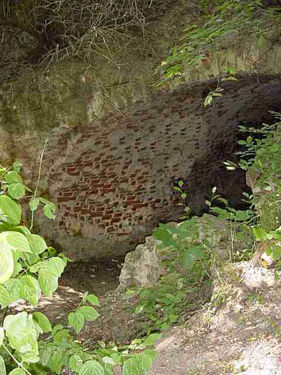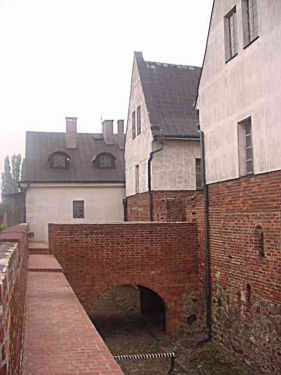The Castle Route – A Cultural Trail of Fortified Structures
The Castle Route is a cultural trail that highlights the preserved brick fortifications within the district, showcasing old castles and fortified courts situated on hills. This thematic route is an extension of the Amber Trail and passes through the following locations: Rychwał (castle; court on a hill) – Grodziec (remains of the court) – Sławsk (remains of the court) – Konin – Przyjma (Przyjemski tenement house) – Gosławice (castle).
Rychwał
The former castle in Rychwał, once a fortified residence of the Zaremba family, was likely built in the 15th century by Marcin from Sławsk, a participant in the Battle of Grunwald and general starost of Wielkopolska, or by his descendants. This building is associated with the tragic story of Wojciech from Rychwał, who in the early 16th century was sentenced for robberies and assaults on merchants traveling the Kalisz-Konin route. The castle was destroyed in the 16th century, and its ruins remain to this day.
Sławsk
In Sławsk, the remains of the Zaremba fortified court can be found in the basement of what was once a palace. The palace is believed to have served as the residence of Marcin from Sławsk, general starost of Wielkopolska, in the 15th century. Preserved fragments of the stone wall, along with brick remains and elements of knightly armament (such as a spur), provide evidence of this historical connection.
Kazimierz Biskupi
Near the exit from Kazimierz Biskupi, towards Pątnów, there once stood a fortified court on a hill, which served as the residence of the Bishops of Lublin, who owned the town and several nearby villages. In 1690, the ruins of the building were dismantled, and the bricks were repurposed to construct the wall surrounding the cemetery of the Bernardine monastery in Kazimierz.
Konin
The castle in Konin was built during the reign of Casimir the Great. Along with other castles in Koło, Pyzdry, Śrem, and Poznań, it formed part of the main defensive line along the Warta River. By the end of the 16th century, the castle had fallen into ruin. It was further destroyed and set on fire during the Polish-Swedish War (1655–1660) and was never restored. Ultimately, it was demolished in the 19th century, with some materials (such as cut stones) being repurposed for the construction of the Reformed Evangelical Church in Żychlin. Today, no trace of the king's castle remains.
Przyjma
In Przyjma, the remains of a fortified residence, once made of brick, are attributed to the Przyjemski family, who bore the Rawicz coat of arms. The family was highly influential in Poland, and their residence was likely built at the turn of the 15th/16th century, when they began to rise within the ranks of the Wielkopolska elite. Descriptions suggest that this two-story fortified court with porches was destroyed during the Swedish Deluge (1655–1660). Since then, it has remained in ruins.
Konin-Gosławice
Gosławice is home to one of Poland's oldest knightly castles, which was adapted for artillery defense. Built in the early 15th century by Andrzej Łaskarz from Gosławice, Bishop of Poznań (died 1426), the castle was first mentioned by Jan Długosz in his Annals of the Polish Kingdom. By the end of the 17th century, the castle had fallen into disrepair. It was later renovated by the Kadziwiłł family, but in 1756, a major windstorm severely damaged the roof, which was carried away on the nearby lake. A detailed inventory of the castle, dated 1772, described its poor condition. From that time onward, the castle experienced gradual decay. In the 1980s and 1990s, it underwent restoration and is now home to the District Museum in Konin.
Prepared by: Paulina Wojtyniak










